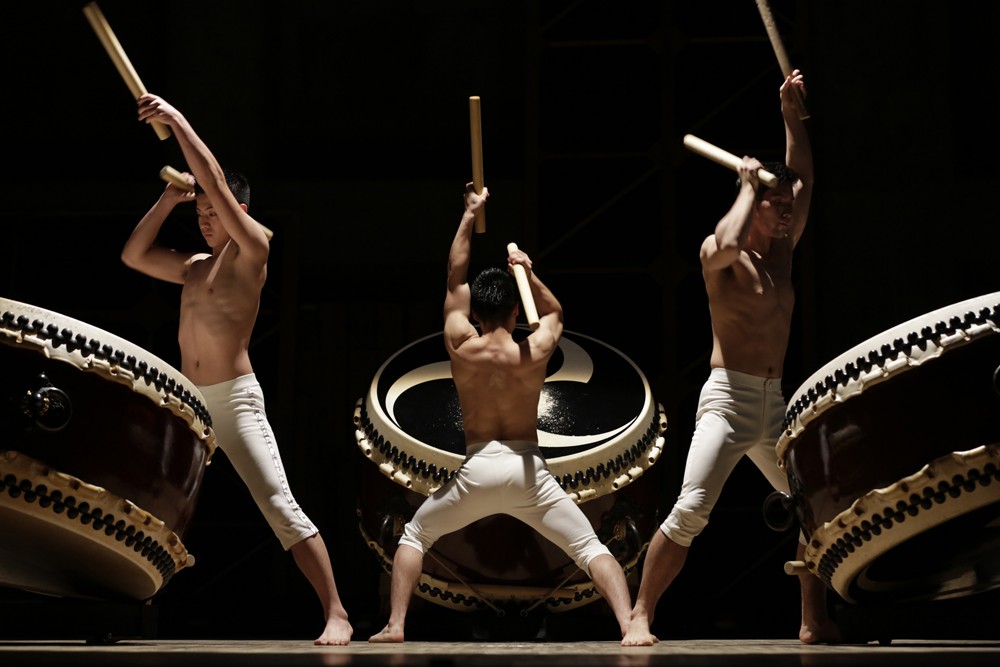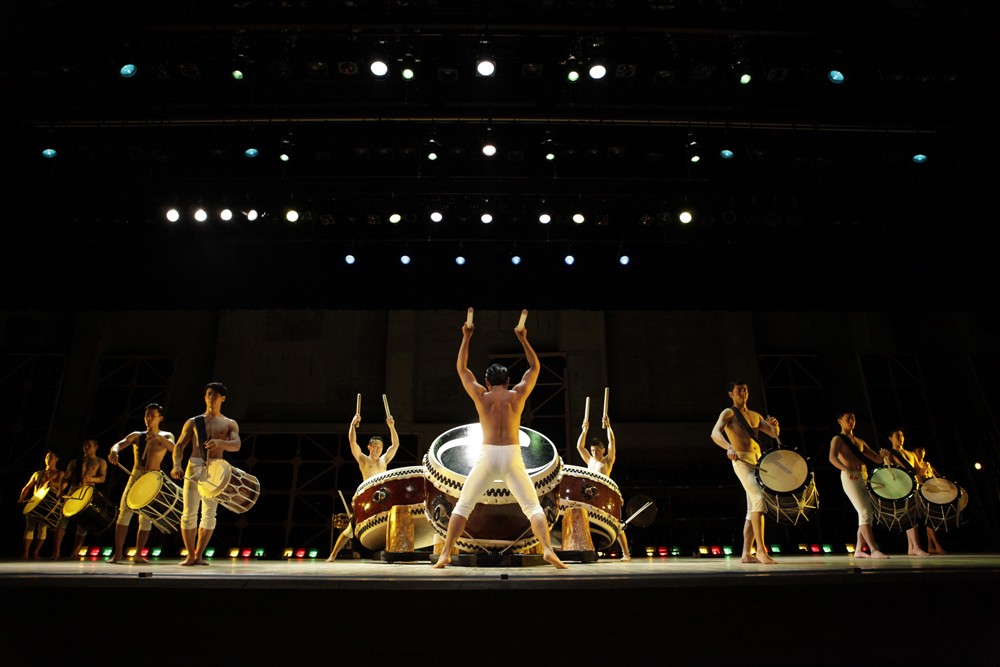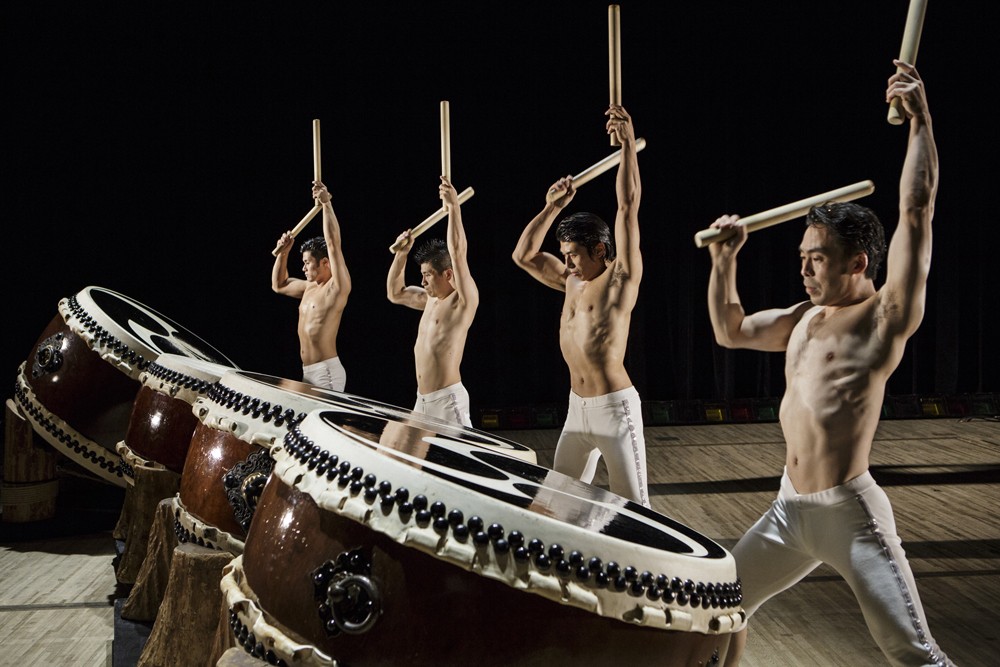 There is no more primal instrument than the drum. However, despite the age of the instrument, its versatility has transcended the limited communication skills of those who first used it (give or take eight thousand years ago). And just as some string instruments are meant to synthesize the sound of the human voice, the steady beat of certain drums mimics the sound of the human heart. In Japanese, the word “Kodo” can be translated to mean “heartbeat;” it can also be translated to mean “children of the drum.” According to the Japanese drumming group Kodo, their desire is to perform drum shows with the simple heart of a child.
There is no more primal instrument than the drum. However, despite the age of the instrument, its versatility has transcended the limited communication skills of those who first used it (give or take eight thousand years ago). And just as some string instruments are meant to synthesize the sound of the human voice, the steady beat of certain drums mimics the sound of the human heart. In Japanese, the word “Kodo” can be translated to mean “heartbeat;” it can also be translated to mean “children of the drum.” According to the Japanese drumming group Kodo, their desire is to perform drum shows with the simple heart of a child.
For the past 36 years, they have done just that. Their shows have taken them to 49 countries, on five continents, for a total of nearly 6,000 performances. As they tour and present shows which highlight traditional Japanese drumming styles, they continue to study the art of the drum and routinely assimilate diverse influences into their productions. In advance of Kodo’s upcoming performance of their new show DADAN, at Segerstrom Center for the Arts, on February 8, the Weekly caught up with Kodo to talk about the origins of Japanese drumming, the group’s diverse influences, and what brings their drumming men to Costa Mesa.
OC Weekly (Scott Feinblatt): To what extent does the research and assimilation of various types of world music affect the group’s compositions and performances?
Kodo: In its 35 year history, Kodo has travelled to almost 50 different countries, and the culture and experience at every location affects greatly on our performers. Some of our performers’ compositions are based off of foreign rhythmic patterns from Spain (flamenco), Morocco, and the tribes of Africa. Not only the experience from performing in different countries, but meeting and collaborating with artists from all around the world are all inspirations for Kodo’s music and performance.
In your press release, you mention that Kodo both preserves a traditional form as well as re-interpreting it. How is this achieved?
Kodo has had the privilege of learning the traditional art forms from all parts of Japan. Those art forms are often performed on Kodo’s stage through our artistic interpretations. Through the interactions with the local masters, we build relationships that allow us to help preserve the art form as well as make our own interpretation of it to perform on stage.
 To what extent did the traditional form provide room for variation and / or adaptation?
To what extent did the traditional form provide room for variation and / or adaptation?
There are a lot of ways to answer this, but to give a general idea, taiko drumming was originally meant for religious and festive purposes, and was never performed on stage as performing arts. Kodo’s antecedent group, called Ondekoza, is said to be one of the few first taiko ensembles that brought taiko on stage as a performance entertainment. Furthermore, many of the pieces that Kodo performs today, were once traditional forms that were only done in local communities of Japan. These are all successfully done through the strong relationships that were built between Kodo and the locals who have taught them the art form.
In addition to the taiko drum, how many percussive instruments are used in the shows?
This depends on each production, but for DADAN — the production that is touring across the United States in 2017 — we use other non-taiko instruments such as timpani, gong, box-phone (marimba), kempul and bonang (Indonesian gamelan instruments), and other auxiliary instruments that are made originally by Kodo.
Are there any non-percussive instruments (strings, woodwinds, etc.) in the Kodo shows?
Dadan is a production that focuses purely on the act of drumming. (Hence, its literal translation from Japanese is “drumming men.”) Therefore, we do not have any melodic instruments such as bamboo flute for this performance. We have, in the past, used string bow and western flute for our productions.
 How did this particular performance, at Segerstrom Center for the Arts, come about?
How did this particular performance, at Segerstrom Center for the Arts, come about?
There is a huge taiko community that lies across the world — and in the United States in particular. Of this population, California is one of the hubs for the American taiko community, and it’s great to be in Costa Mesa since there are many people in the area who also practice the art form.
Is there anything else that you’d like audiences to know prior to attending DADAN?
Dadan is not just a bombastic production with heavy drumming; it also has a very beautiful and delicate performance aspect to it, done by the skillful Kodo performers. In this 2 hour performance, you will witness a powerful performance, perfected in every detail, and feel a comforting sensation through the rhythms of a taiko drum.
For tickets and event information, please visit the Philharmonic Society website.



CBD exceeded my expectations in every way thanks https://www.cornbreadhemp.com/collections/cbd-cream . I’ve struggled with insomnia looking for years, and after tiring CBD because of the prime mores, I finally practised a loaded night of restful sleep. It was like a bias had been lifted mad my shoulders. The calming effects were calm still scholarly, allowing me to inclination afar obviously without sympathies groggy the next morning. I also noticed a reduction in my daytime anxiety, which was an unexpected but welcome bonus. The partiality was a flash earthy, but nothing intolerable. Whole, CBD has been a game-changer for my sleep and anxiety issues, and I’m appreciative to have discovered its benefits.